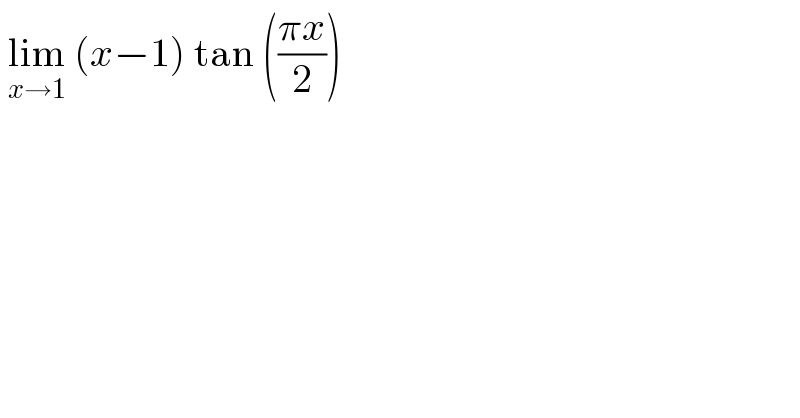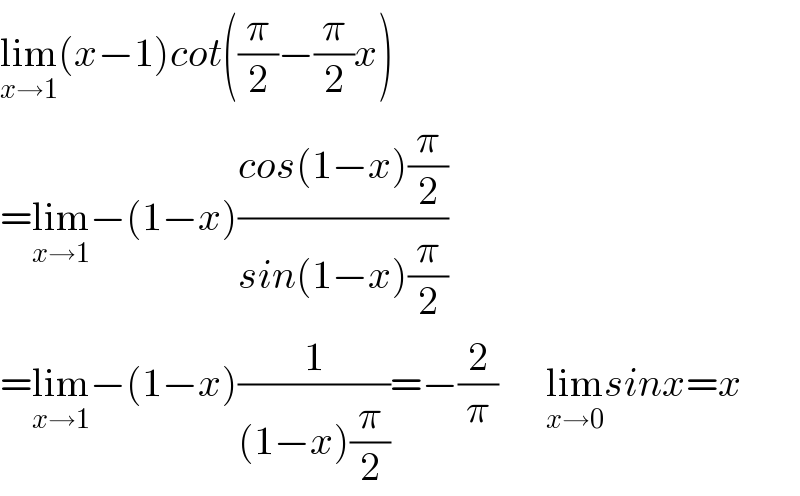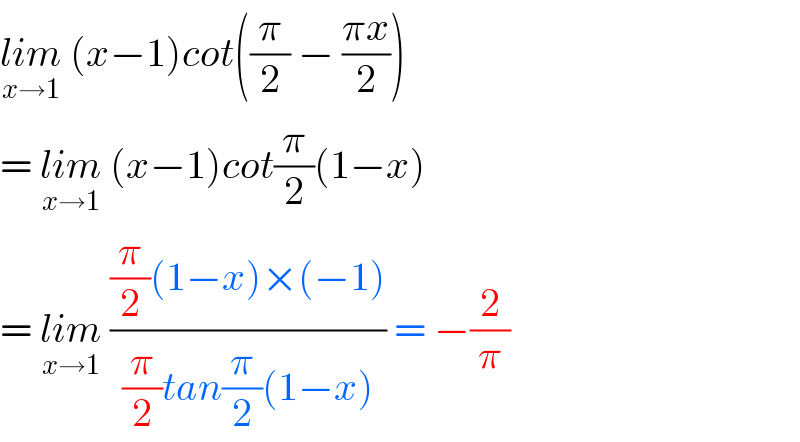
Question and Answers Forum
Question Number 119074 by benjo_mathlover last updated on 22/Oct/20

Answered by Dwaipayan Shikari last updated on 22/Oct/20

Answered by bemath last updated on 22/Oct/20
![let x = 1+m ∧ m→0 lim_(m→0) (m/(cot ((((1+m)π)/2)))) = lim_(m→0) [ (m/(−tan (((mπ)/2)))) ] = −(2/π)](Q119075.png)
Answered by 1549442205PVT last updated on 22/Oct/20
![Put x−1=t⇒(x→1∼t→0∼πt/2→0) I= lim (x−1) tan (((πx)/2)) =lim_(t→0) [ttan((π(1+t))/2)] =lim_(t→0) (−tcot((πt)/2))=lim_(t→0) (−(1/π))(((πt)/(sin((πt)/2)))×cos((πt)/2)) =lim_(t→0) (−(1/π))×(( 2)/((sin(πt/2))/((πt/2))))×cos(πt/2)= −(2/π)×1=−(2/π)](Q119087.png)
Answered by malwan last updated on 22/Oct/20

